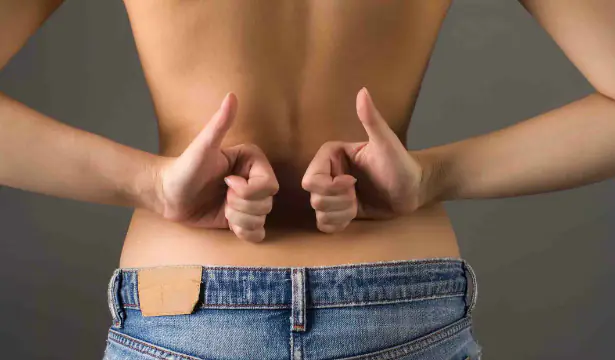Hello! Here is the text of the article according to your assignment:
Today, almost every second person has back problems. Moreover, the age of people who suffer from lower back pain is quite young. Let's try to understand the causes of this disease.
Most often, back pain is associated with impaired spinal mechanics. This can occur with osteochondrosis, intervertebral hernia, spondylosis or scoliosis.
Most common diseases
Osteochondrosis is one of the most common causes of back pain. It can begin to develop at any age. Osteochondrosis can affect any region: cervical, thoracic, lumbar, but more often it is the cervical and lumbar regions that suffer, since the spine in these places is most mobile and experiences greater load.
A herniated disc is another common cause of back pain. This phenomenon is extremely unpleasant because it is accompanied by very severe pain. Almost any movement brings pain, but its localization and intensity completely depend on the location of the intervertebral hernia and the degree of infringement of the nerve roots.
Another common cause of back pain is inflammation. It is caused by diseases such as psoriasis, spondylitis, Crohn's disease.
Sometimes the source of pain may be hidden in the back muscles or soft tissues. The cause may be either sprains or muscle overload during exercise in the gym, or rare diseases such as fibromyalgia.
A symptom of a disease of such internal organs as the pancreas, liver, kidneys, intestines, gallbladder, genitourinary system, as well as the musculoskeletal system is very often pain in the lower back on the right. Painful sensations can be either temporary or periodic.
Pain in the right side of the lower back may increase with movement and decrease with rest. If the lower back is pulled on the right, this may indicate the presence of:
- gynecological diseases in women;
- initial stage of prostatitis in men;
- hepatitis A;
- cholecystitis;
- pyelonephritis;
- right-sided pneumonia.
Correcting posture with an elastic band
A common diagnosis for severe back pain is lumbosacral radiculitis. Moreover, the pain in this area can be both acute and dull. Most often it is one-sided, radiating to the buttock, thigh and outer surface of the lower leg. The pain intensifies when walking, changing body position, coughing, sneezing. Posture and gait change, and characteristic poses and movements appear.
Also common is a disease of the lumbar spine such as lumbago (lumbago). When a shooting occurs, the nerve roots are irritated, resulting in sharp, severe pain. Backache in the lower back mainly occurs in people engaged in heavy physical activity due to overstrain of the lumbar muscles or during hypothermia. Sometimes an attack of lumbago can be caused by an acute or chronic infection.
Factors contributing to back pain
If you neglect treatment, back pain most often has a recurring nature, when periods of relatively short-term well-being are replaced by returning pain.
An exacerbation of the condition can be provoked by:
- lifting weights;
- staying in an uncomfortable position for a long time;
- hypothermia;
- infection.
Which doctor should I contact?
See a neurologist or traumatologist. Depending on the results of the examination, consultation with other specialists may be required.
You may be assigned:
-
consultation with a neurologist to assess the condition of the spine, back muscles and nervous system;
-
consultation with a urologist – in case of suspected urinary system disease;
-
consultation with a gynecologist – if chronic diseases of the female reproductive system are suspected or present;
-
general analysis to



